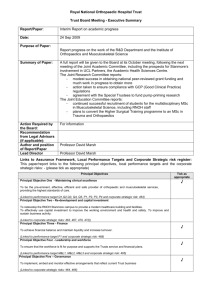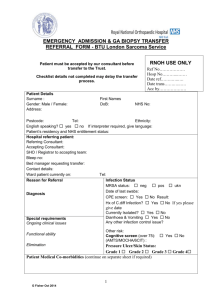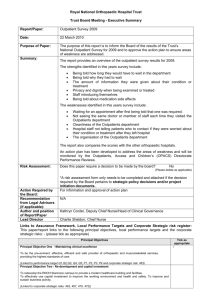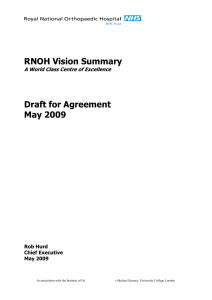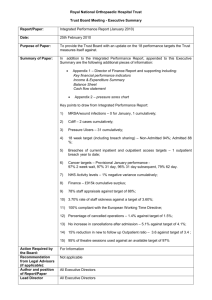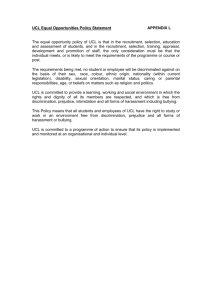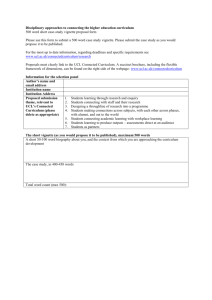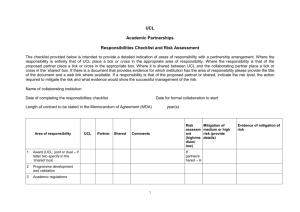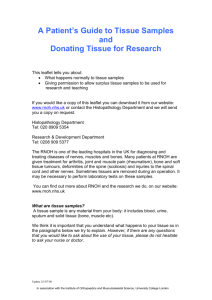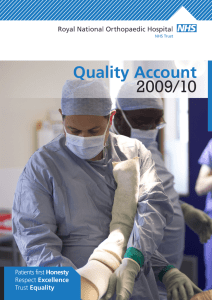Executive Summary, Review of the Joint Academic Strategy
advertisement
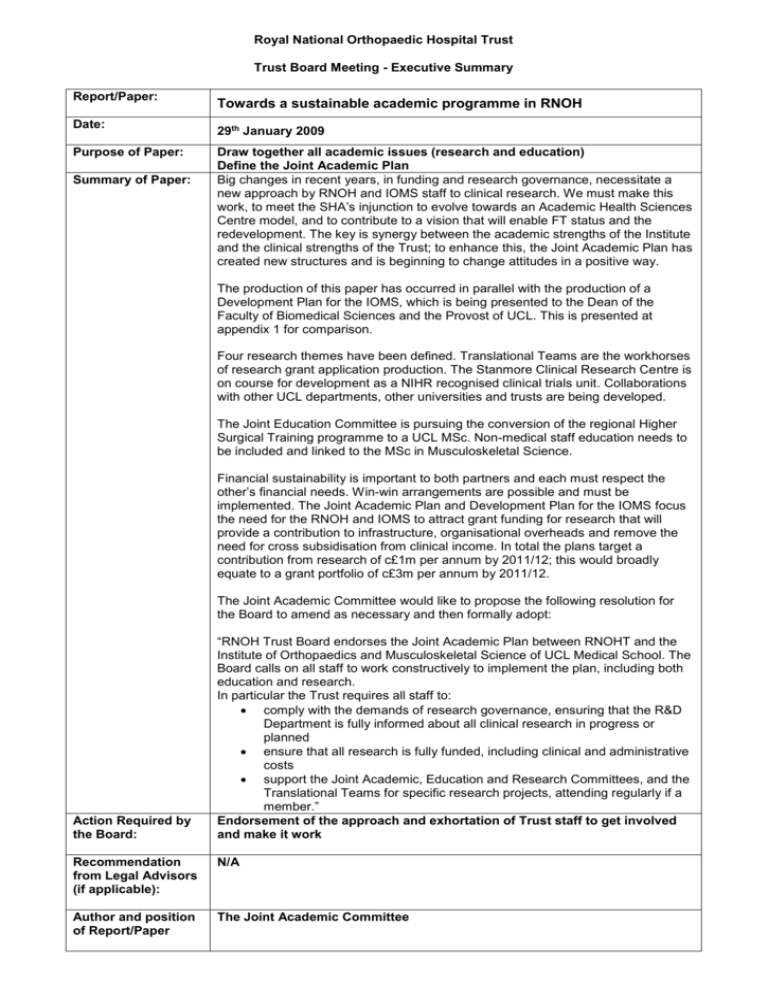
Royal National Orthopaedic Hospital Trust Trust Board Meeting - Executive Summary Report/Paper: Towards a sustainable academic programme in RNOH Date: 29th January 2009 Purpose of Paper: Draw together all academic issues (research and education) Define the Joint Academic Plan Big changes in recent years, in funding and research governance, necessitate a new approach by RNOH and IOMS staff to clinical research. We must make this work, to meet the SHA’s injunction to evolve towards an Academic Health Sciences Centre model, and to contribute to a vision that will enable FT status and the redevelopment. The key is synergy between the academic strengths of the Institute and the clinical strengths of the Trust; to enhance this, the Joint Academic Plan has created new structures and is beginning to change attitudes in a positive way. Summary of Paper: The production of this paper has occurred in parallel with the production of a Development Plan for the IOMS, which is being presented to the Dean of the Faculty of Biomedical Sciences and the Provost of UCL. This is presented at appendix 1 for comparison. Four research themes have been defined. Translational Teams are the workhorses of research grant application production. The Stanmore Clinical Research Centre is on course for development as a NIHR recognised clinical trials unit. Collaborations with other UCL departments, other universities and trusts are being developed. The Joint Education Committee is pursuing the conversion of the regional Higher Surgical Training programme to a UCL MSc. Non-medical staff education needs to be included and linked to the MSc in Musculoskeletal Science. Financial sustainability is important to both partners and each must respect the other’s financial needs. Win-win arrangements are possible and must be implemented. The Joint Academic Plan and Development Plan for the IOMS focus the need for the RNOH and IOMS to attract grant funding for research that will provide a contribution to infrastructure, organisational overheads and remove the need for cross subsidisation from clinical income. In total the plans target a contribution from research of c£1m per annum by 2011/12; this would broadly equate to a grant portfolio of c£3m per annum by 2011/12. The Joint Academic Committee would like to propose the following resolution for the Board to amend as necessary and then formally adopt: Action Required by the Board: “RNOH Trust Board endorses the Joint Academic Plan between RNOHT and the Institute of Orthopaedics and Musculoskeletal Science of UCL Medical School. The Board calls on all staff to work constructively to implement the plan, including both education and research. In particular the Trust requires all staff to: comply with the demands of research governance, ensuring that the R&D Department is fully informed about all clinical research in progress or planned ensure that all research is fully funded, including clinical and administrative costs support the Joint Academic, Education and Research Committees, and the Translational Teams for specific research projects, attending regularly if a member.” Endorsement of the approach and exhortation of Trust staff to get involved and make it work Recommendation from Legal Advisors (if applicable): N/A Author and position of Report/Paper The Joint Academic Committee Lead Director David Marsh Links to Assurance Framework, Local Performance Targets and Corporate Strategic risk register: This paper/report links to the following principal objectives, local performance targets and the corporate strategic risks: - (please tick as appropriate) Principal Objectives Tick as appropriate Principal Objective One- Re-development and capital investment To redevelop the RNOH Stanmore campus to provide a modern healthcare building. To effectively use capital investment to improve the working environment and health and safety. To improve and sustain business activity. (Linked to performance target 5 and corporate strategic risks: 463, 467, 470, 472)) Principal Objective Two - Finance √ To achieve financial balance and maintain liquidity. (Linked to performance target 6a, 6b and corporate strategic risk: 468) Principal Objective Three - Leadership and workforce √ To ensure that the workforce is fit for purpose and supports the Trusts service and financial plans. (Linked to performance target 7a, 7b and corporate strategic risk: 465) Principal Objective Four – Governance √ To implement, embed and monitor effective arrangements that reflect current Trust business (Linked to corporate strategic risks: 464, 466) Principal Objective Five - Achievement of access / activity targets To achieve access targets and to deliver the activity targets. (Linked to performance target 2a, 2b, 2c 3, 8a, 8b, 8c, 8d and corporate strategic risk: 463) Principal Objective Six - IM&T Develop and implement a cohesive and integrated IM&T strategy. (Linked to corporate strategic risk: 471) Principal Objective Seven - Maintaining clinical excellence To be an effective, efficient and safe provider of orthopaedic and musculoskeletal services, providing the highest standards of care. (Linked to performance target 1a, 1b, 1c, 1d, 8a, 8b, 8c, 8d and corporate strategic risk: 463) Principal Objective Eight - Foundation Trust To achieve Foundation Trust status. (Linked to performance target 4 and corporate strategic risks: 463, 467, 469, 472) √ √ √ √
